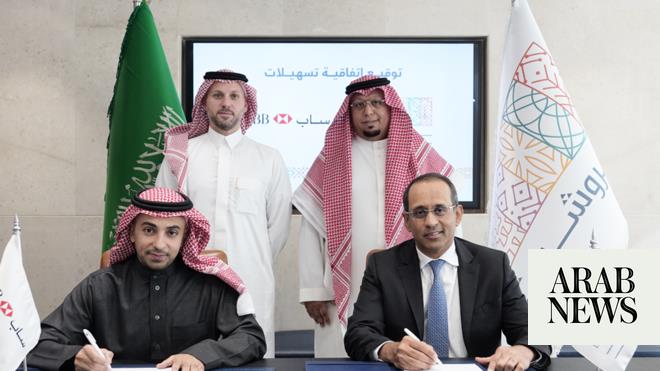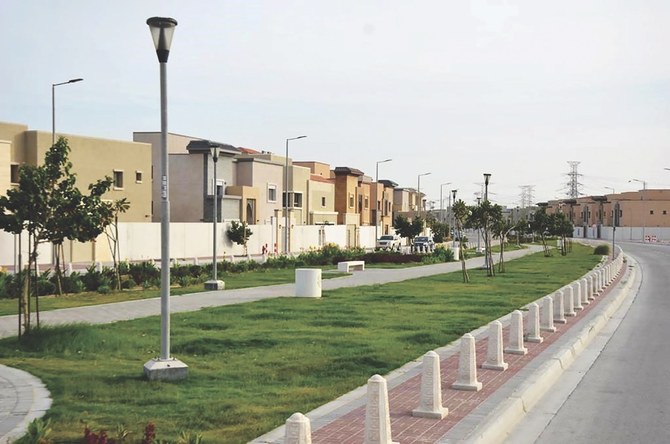
Term deposits drive 8% growth in money supply
RIYADH: Increased credit to corporate activities propelled a 10 percent annual surge in loans for Saudi banks in 2023, reaching SR2.58 trillion ($690 billion), the latest data showed.
According to the Saudi Central Bank’s latest monthly bulletin, credit extended to individuals, constituting 48 percent of bank loans, grew by 7 percent in 2023, while corporates and other activities experienced a 13 percent rise compared to the previous year.
Meanwhile, money supply, encompassing demand and term deposits along with other quasi-money deposits, experienced an 8 percent growth, reaching SR2.69 trillion, driven predominantly by substantial growth in term deposits compared to other categories.
On the other hand, real estate activities secured the largest credit allocation among non-retail sectors, totaling SR250.60 billion in bank credit, marking a substantial 20 percent annual growth from the previous year’s figure of SR209.6 billion.
Despite having lower percentage shares of bank loans, the sectors with the highest annual credit growth during this period were professional, scientific, and technical activities, obtaining SR5.77 billion in loans.
The education sector, in particular, secured SR6.28 billion. Credit extended to these two sectors grew by 51 percent and 33 percent, respectively.
This comes as the higher education sector in the Kingdom emerges as the largest individual education market in the Gulf Cooperation Council region, according to Colliers’ latest report.
Mansoor Ahmed, the executive director for Healthcare and Education at Colliers Middle East and Africa, explained that economic transformation and diversification programs under Vision 2030 and the Saudization drive are expected to spur demand for higher education.
Colliers foresees a shift in demand from traditional offerings toward artificial intelligence, robotics, and nuclear energy. Additionally, there is an expected increase in demand for sustainable energy.
“The demand is expected to shift toward evidence-based research and development studies taking into consideration the economic transformation agenda under Vision 2030 and the changing market dynamics, rather than traditional fields of study to overcome the mismatch between the degrees, skills and requirements of the employment market,” noted Ahmed in the report.
Meanwhile, in a notable shift within retail real estate lending, the latest data from SAMA’s report revealed a 35 percent decline to SR77.74 billion in new mortgages extended to individuals in 2023, potentially influenced by rising borrowing costs.
The repo rate at SAMA last rose by 25 basis points to 6 percent in July, marking the highest borrowing cost since 2001. This adjustment was in line with the decision of the Federal Reserve.
The US Fed’s decision, driven by the aim of addressing heightened inflation, had a notable impact on monetary policy in the Gulf region, especially given that most currencies in the area are pegged to the dollar.
Nevertheless, the impact of increasing interest rates has been mitigated by a substantial surge in construction activities related to Saudi Arabia’s five official giga-projects and other major development initiatives supported by the Public Investment Fund.
According to MEED’s giga-projects tracker, these five official developments in Saudi Arabia have awarded $45 billion worth of construction contracts since their inception.
Developers of these giga-projects emphasize strategic planning to withstand economic uncertainties, including challenges posed by rising interest rates.
Addressing a panel at the Future Investment Initiative in Riyadh in October, David Grover, CEO of giga-project developer Roshn, shared his perspective, stating, “I’m of the generation that remembers double-digit interest rates, so I think it is cheap at the moment.”
Money Supply
Meanwhile, the money supply in Saudi Arabia saw an 8 percent annual increase, reaching SR2.69 trillion in 2023, primarily driven by growth in term deposits.
The share of time and savings deposits increased from 26.24 percent in 2022 to 32.18 percent in 2023, accompanied by a 32 percent growth in this account. The rise in interest rates may have attracted depositors seeking higher income opportunities.
Fitch Ratings reported in January that the liquidity boost in Saudi Arabia is linked to a significant increase in deposits from government-related entities, primarily in the form of term deposits.
This surge in GRE deposits is likely influenced by these entities choosing to place their surplus liquidity with commercial banks rather than SAMA, according to the agency.
The loan-to-deposit ratio, a key liquidity measure for banks, was at 80.7 percent in 2023, down from 81.55 percent the previous year and well below the regulatory maximum of 90 percent. This indicates that Saudi banks maintain ample liquidity to support their loan portfolio.
Fitch predicted a 10 percent growth in Saudi banking sector financing in 2024, surpassing the GCC average of 5 percent. The agency also forecasted a 10 percent growth in deposits in 2024, primarily driven by term accounts.












